By Lawrence Haywood, Mar 1, 2025
Few cities in the world set imaginations flaring as much as Saigon in the South of Vietnam. The diverse perceptions of smoky temples, cozy cafes, crazy traffic, sky-scraping buildings, and an aptitude for business have all been shaped by its turbulent history. Saigon has undergone many transformations over its past, from war with the Khmer through the war with France, to war with North Vietnam and eventually reunification under a new flag and a new name.
With such a rich blend of culture, history, and modernity, it’s no wonder that so many international tourists have Saigon firmly in their sights when visiting Vietnam. "When is the best time to visit Saigon?" is a question for many tourists visiting Vietnam. You will find the answer below!
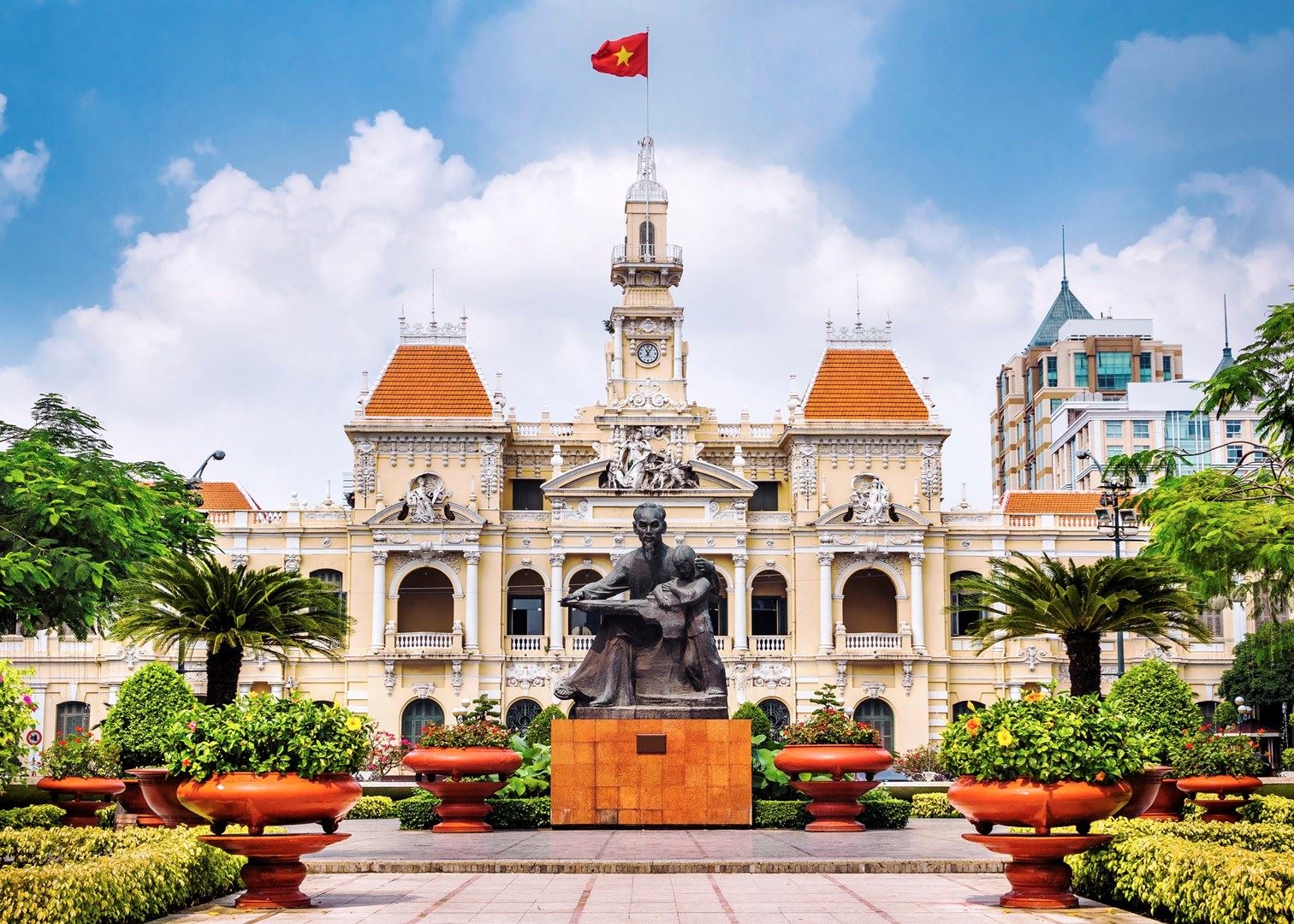
Saigon City Hall
For those tourists, it’s certainly worth a bit of research to find the best time to visit Saigon, as the city finds itself in the deep south of Vietnam and has a completely different weather system from the centre and the north. Being much nearer to the equator, Saigon has some of Vietnam’s most interesting weather, and its unpredictability can either be a source of great amusement or great frustration. Unlike the four seasons of Hanoi, Saigon features two and they are named for the two levels of rain that distinguish both halves of the year, the wet and dry seasons. In our guide to the best time to visit Saigon, we will talk you through both of these seasons and their various pros and their cons.
>> Is it The Best Time to Visit Saigon?
Saigon’s weather patterns are split almost exactly down the middle, meaning you have six months to make use of the city’s dry season. Fairly indisputably, at least in terms of temperature and rainfall, the best time to visit Saigon for most is between November and March.
This is when the chaos of the wet season is forgotten and entire days can be spent outside without constantly checking new surroundings for potential places to run for cover. Unfortunately, this is one of the coldest times to visit Hanoi and one of the wettest times to visit Hoi An, meaning that two or three separate trips to Vietnam would be necessary to see all three major attractions at their best.
>> Why Should I Visit Ho Chi Minh City in Dry Season?
>> Why Shouldn't I Visit Ho Chi Minh City in Dry Season?
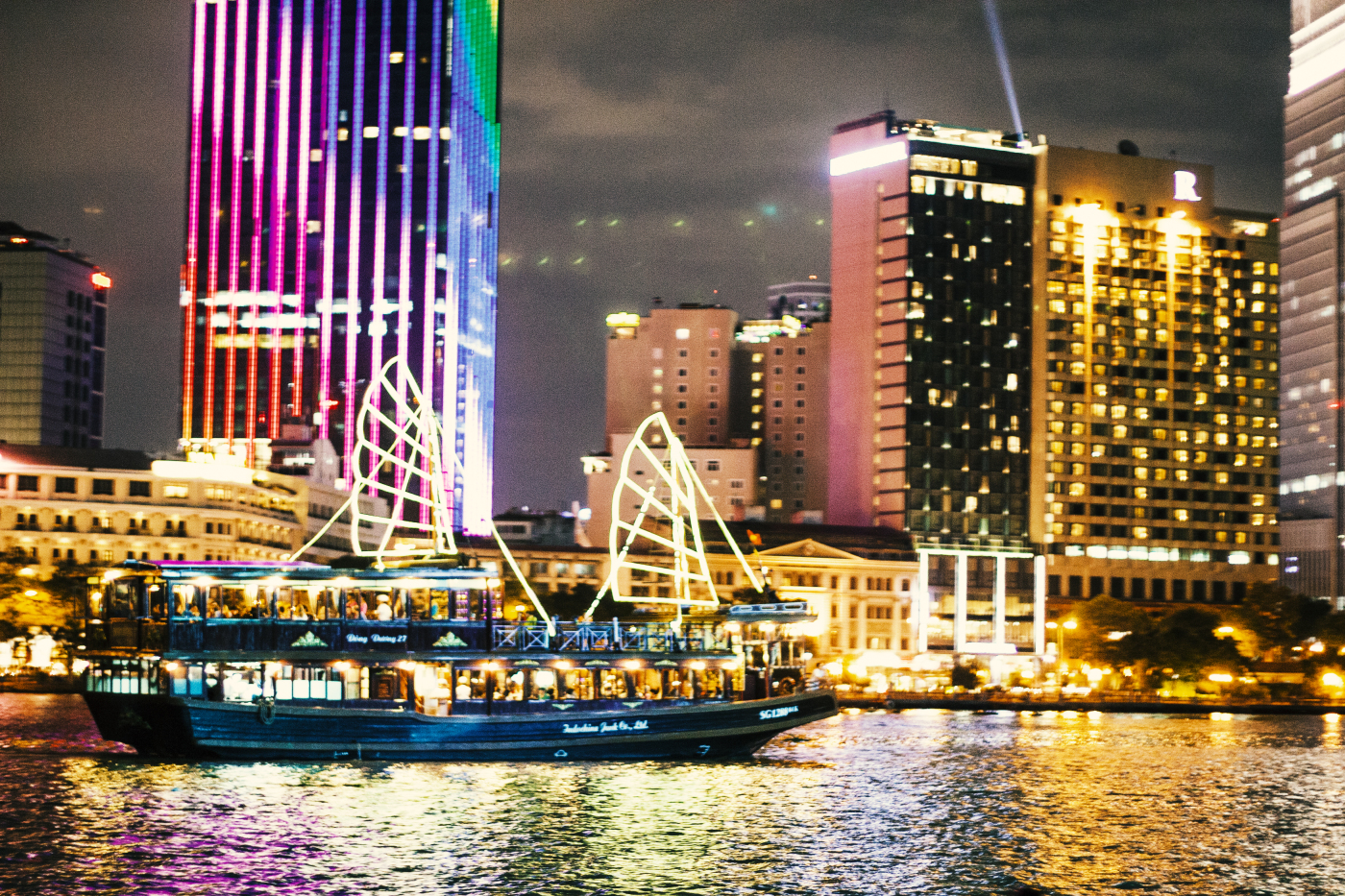
Saigon at night
Being close to the equator, Saigon sees very little fluctuation in its temperatures, with numbers within 3 degrees of each other on average all year. As you might imagine, they’re always consistently high, averaging 30°C (86°F) in the wet season and 27°C (81°F) in the dry. While this might be good news for you and your easily packable suitcase, spare a thought for the locals of Saigon, many of who go through this unrelenting cycle of sweat for the whole of their lives.
The occasions where Saigon turns it down happen mostly in the dry season; January and December can reach a comparatively freezing 22°C (72°F) in rare instances, but don’t be expecting this to happen a lot as this phenomenon is usually after one of the very rare humidity-reducing rainstorms. In general, visiting Saigon between November and April is the best time to enjoy life outdoors. You will still be craving the sprinkle of cooling water that falls from some café awnings, but this is the most comfortable it gets in Saigon, so it’s best to get exploring!
Overall, rainfall shouldn’t be in your consideration if you’re traveling during the heart of the dry season. Any time between December and April is a very safe bet, with as little as 10mm of rain drizzling across January, February, and March. December has four times this amount with 40mm, but this is still nothing to be concerned about. The fringes of the dry season provide the most unsettled weather.
April provides a few snapshots of what is to come later in the year with the occasional sporadic storm, but November is certainly the black sheep of the dry season, providing more rain than all five other months put together as it attempts to climb down from six months of torrential downpours.
Those magical months of January, February, and March only contain 6 days that feature rain between them; that’s an average of 2 days per month for readers struggling with maths. This is a staggeringly low amount that might even count as a drought in other countries. The Saigonese don’t worry though, as they know exactly what’s coming later in the year.
Again, the only time you should be worrying yourself is during November, when 13 days out of the month promise to put a mild dampener on your trip. If traveling in November is unavoidable, save it for the end of the month when most of those days have expelled their rain already.
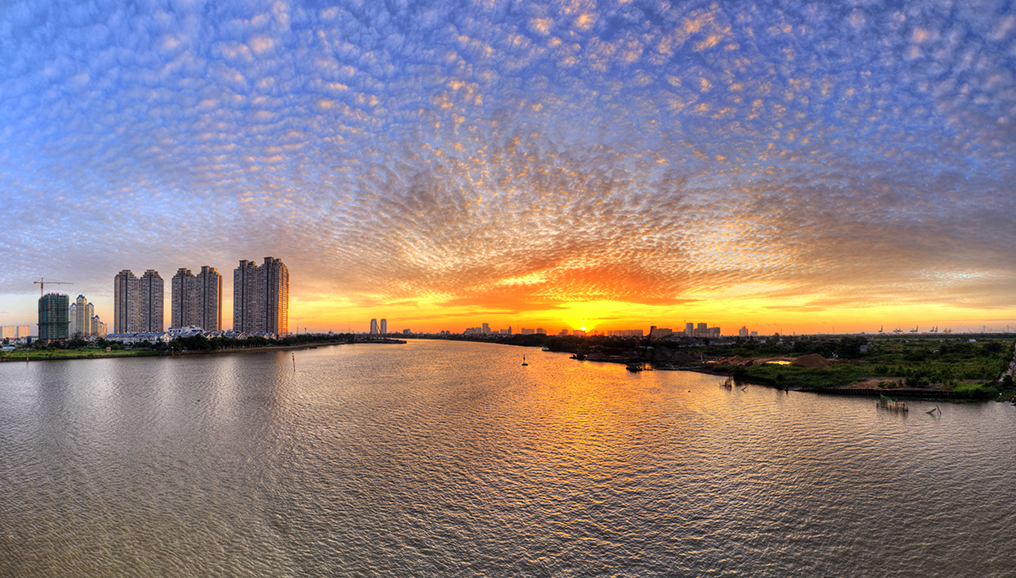
Sunrise in Saigon
With barely a threat from rain, the sun during the first three months of the year is a very brazen picture in the sky, shining for 5 or 6 hours a day with barely a raincloud to disturb it. While this is great news for travelers who want to work on their tans within the first 3 minutes of stepping off the plane, it is less ideal for locals, who subscribe more to the idea that skin looks better when pearly white rather than golden brown.
To this end, the dry season is when you will see most of Vietnam’s famed ‘street ninjas’, young-to-old women who don invariably flowery protective clothing to block out as much of the sun from their skin as possible, with just a small slit for their eyes remaining.
In contrast, November and December have some of the lowest sunshine hours, with 4 per day being the average. Though this provides a bit more of a grey atmosphere, you will still have plenty of time to work on that tan, and with Westerners’ often flippant approaches to skin protection, it’s probably a good job that Mother Nature is doing it for us.
There really is no better time in the year to just walk. With (relatively) moderate temperatures and very little threat from the rain gods, you are free to explore Saigon’s main attractions by foot. There are many routes to follow to find places like the Reunification Palace, War Remnants Museum, Notre Dame Cathedral, and the city’s wealth of pagodas, all the while taking in the sights and smells of a city with the constant buzz of activity running through its sprawling veins.
Saigon is not really known for its green spaces as a lot of these are French creations and were removed after independence to make way for the expanding skyline. However, a bastion of nature remains in the Botanical Gardens, which also features a zoo and several walking paths. Other parks like Tao Dan and Hoa Binh are available, but these are largely concrete entities dotted with small patches of grass - certainly less appealing on a hot day in the dry season.
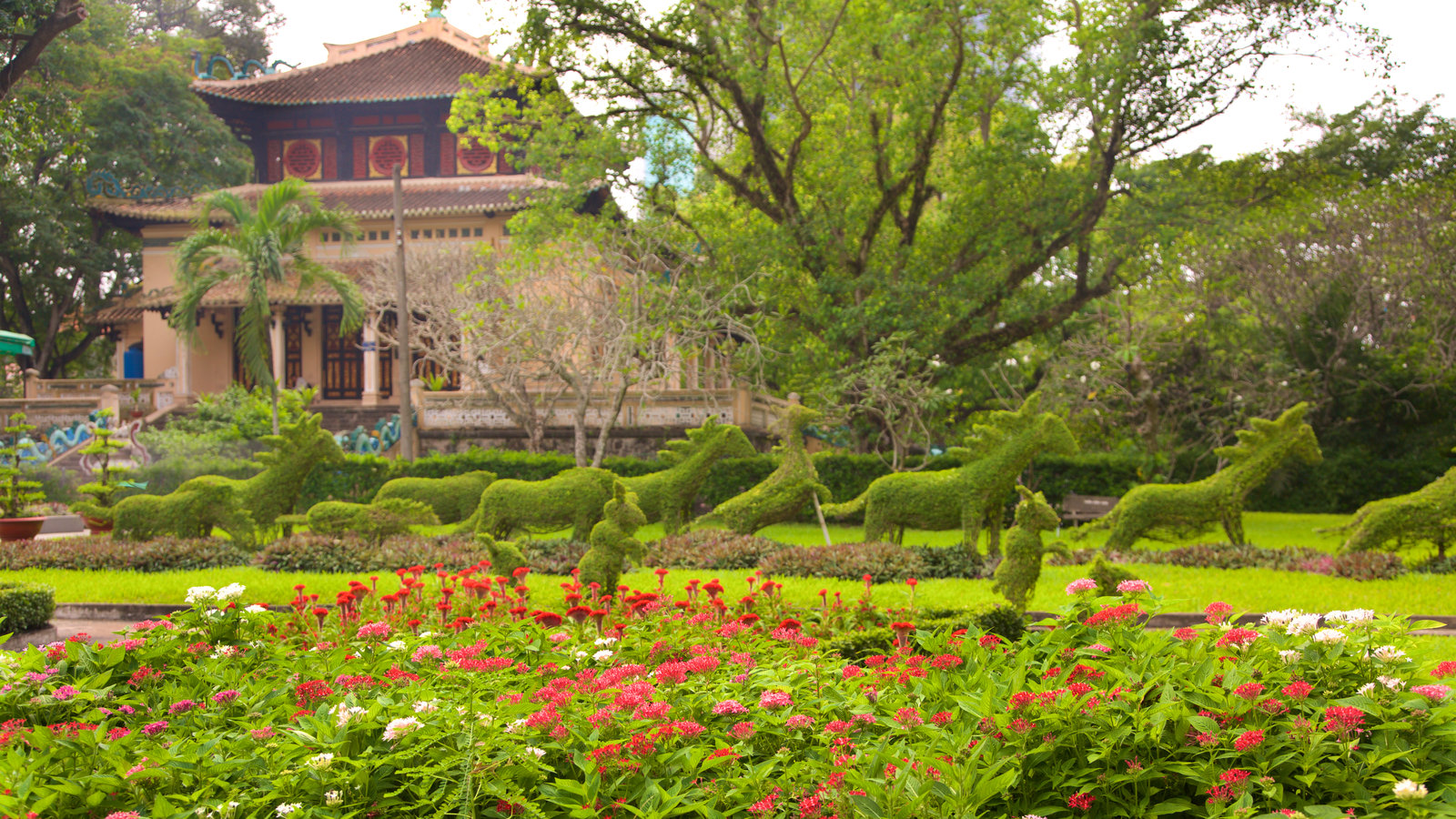
The Botanical Gardens in Saigon
Have you even made it to Asia if you don’t do at least one wacky activity? The Suoi Tien Amusement Park has you covered in this regard, as here, you will never be far from a gigantic statue of Buddha’s ever-watching face. This is a water amusement park located on the outskirts of Ho Chi Minh that’s centered around Buddha; his face is in a permanent state of nirvana while staring at all the happy families playing in the water. Around the park, you can find dragons and whimsical-looking temples, all accessible at the very low price of 100,000 VND ($5).

Suoi Tien Amusement Park
If you want the perfect skyline photo on one of those many days at the start of the year with nothing but clear skies, then getting the lift to the 49th floor of Saigon’s second tallest building, the Bitexco Financial Tower, is a good idea. From the Skydeck here you can pay 200,000 VND ($10) for a panoramic view of Vietnam’s sprawling second city, which can visibly stretch for miles across the flat plains if the pollution isn’t too bad.
Check our best tours to discover Saigon:
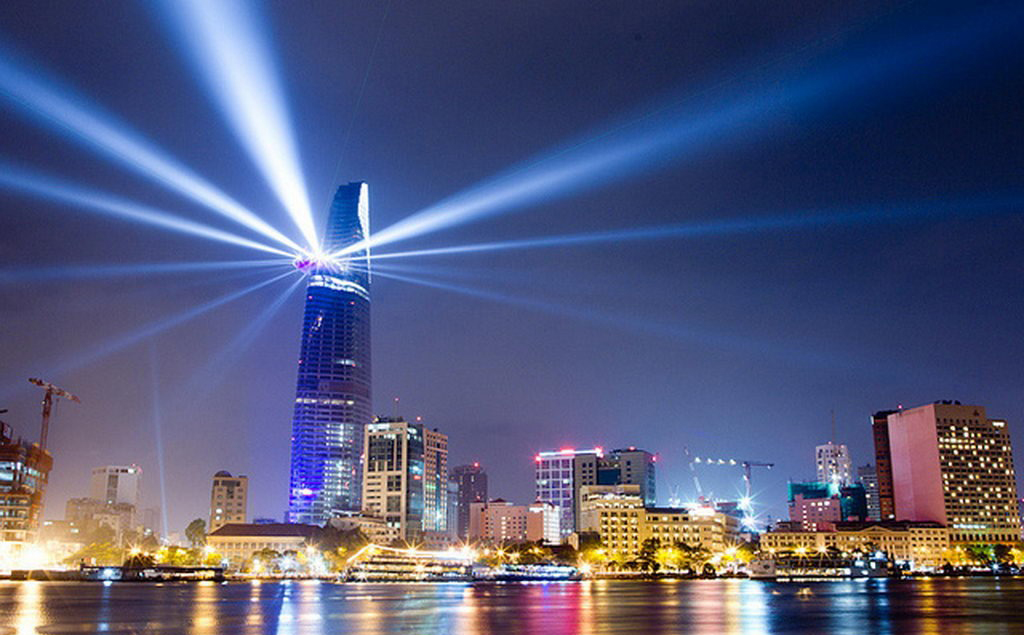
The Bitexco Financial Tower at night
>> Is it the best time to visit Saigon?
With all the merriment and joy to be found during the dry season in Saigon, it’s easy to assume that the city just shut up shop for the wet season, happy with its work over the last 6 months, and ready for a period of extended hibernation. There is still half of the year to go, however, and Saigon plugs away under deluges of rain, undisturbed by a ferocity that the city has grown accustomed to over its long history.
Though it’s hard to claim that the wet season is a better time to visit Saigon than the dry, the period between April and November is still a perfectly fine time to visit if proper research is done and precautions are taken.
>> Why Should I Come to Ho Chi Minh City in Wet Season?
>> Why Shouldn't I Visit Ho Chi Minh City in Wet Season?
The stability in the temperature brought about by Saigon’s proximity to the equator is a full-year phenomenon. You will feel only the slightest difference in the perennial onslaught of heat, which increases maybe 2 or 3 degrees during the wet season to an average of 29°C (84°F).
The air feels a lot cooler during one of Saigon’s iconic wet season rainstorms because of the break in humidity, offering widespread relief from the sometimes-stifling temperatures. For all intents and purposes though, life goes on unperturbed in Ho Chi Minh City.
The real show in Saigon between April and November is in the sky. Rain falls in staggeringly large quantities and it is a fairly common spectacle, at least a handful of times, to see locals hauling their flooded bikes through streets that have become gushing rivers. It really is a sight to behold; the wet season rains are shamelessly entertaining in their brutality. Even the locals can’t help but crack a smile when they drive their motorbikes, legs up to handlebar level, trying their best to keep balance amid a fresh sea and the warped tangle of cheap plastic raincoats.
Late April offers a precursor to the wet season before May kicks it up a level and provides the city with more rain than the entire dry season combined, with 140mm. This rises to 180mm in June and then to its apex in July, with 190mm of rain falling over 23 days out of 31. Rain levels then dance around this area for a couple of months before climbing down to 160mm in October and 120mm in November, just before the dry season provides some much-needed relief.
This dour outlook is enough to put off even hardy travelers, but it is important to note that rains are usually afternoon affairs, lasting between 1 and 3 hours as clouds release a torrent of water before relenting. As long as you can find some indoor entertainment for those hours, you will not leave Saigon disappointed.
It doesn’t take much beyond simple common sense to determine that all that rain means not much sun. While the rain can be tolerated, even enjoyed, and the temperature change between the dry season is minimal, the grey and cloudy days of the wet season are probably its biggest drawback.
They’re not always firing on all cylinders, but clouds like to hang around during Saigon’s wet season just to keep the threat of rain alive, even if they don’t always deliver.
From 6 hours per day in the dry season, the start of the wet season sees clouds congregate and sunshine hours drop down to 4 per day. This persists for the majority of the wet season, sometimes rising to around 5 hours per day, but usually steadfast at 4. While extended periods in the city can start to feel a bit gloomy during this time, short trips don’t make much of an impact on your mood and Saigon can still be enjoyed on a 2, 3 or 4-day visit.

The Reunification Palace
Not quite the miserable assessment that it sounds. Sitting in a café and watching the pandemonium of a city under constant attack from above is frankly, unmissable. Despite the strength of Saigonese rainstorms, there is a wonderful calm that descends on the city, a perfect accompaniment to Vietnamese coffee under the security of a waterproof awning. Entire days can be spent people-watching in Vietnam and there is no better time to see how the locals cope and thrive than the wet season.

Cafe in Saigon
The Vietnamese love of markets is well documented. A history of communal gathering between vendors selling the same product gave rise to entire streets and entire sections of markets known for selling one product. Ben Thanh Market has a huge variety of goods on sale, as does An Dong and the Russian Market, most importantly though, they are all indoors and graced with the presence of large fans – perfect for the many days during the wet season where stepping outside is simply not an option.
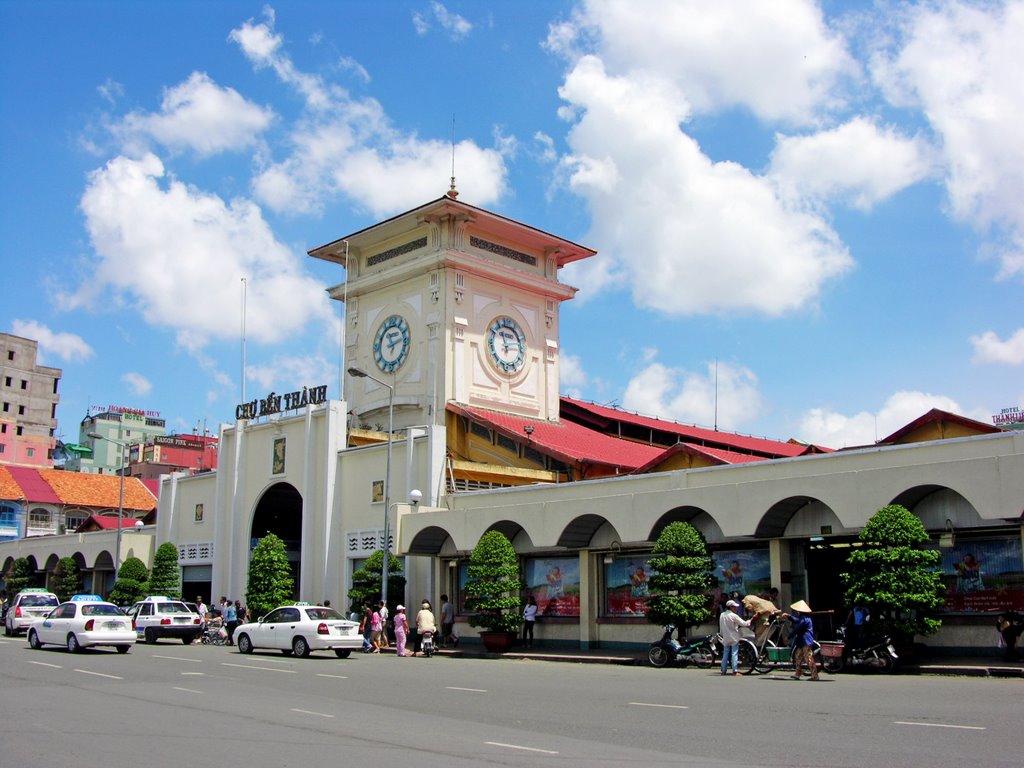
Ben Thanh Market
It’s almost certain that Saigon developed its impressive repertoire of museums to provide tourists with something to do during the 6 months of rain. Saigon’s history is a long and eventful one and its museums tell every aspect of the story of the city.
The is probably its most famous and notorious because of its portrayal of the American War and its graphic pictures of the devastation caused by Agent Orange. There is no shortage of museums regarding the war, but many other aspects of Vietnamese culture can be explored through the Ao Dai Museum, Southern Vietnam Women Museum and the Ho Chi Minh City Museum of Fine Arts.
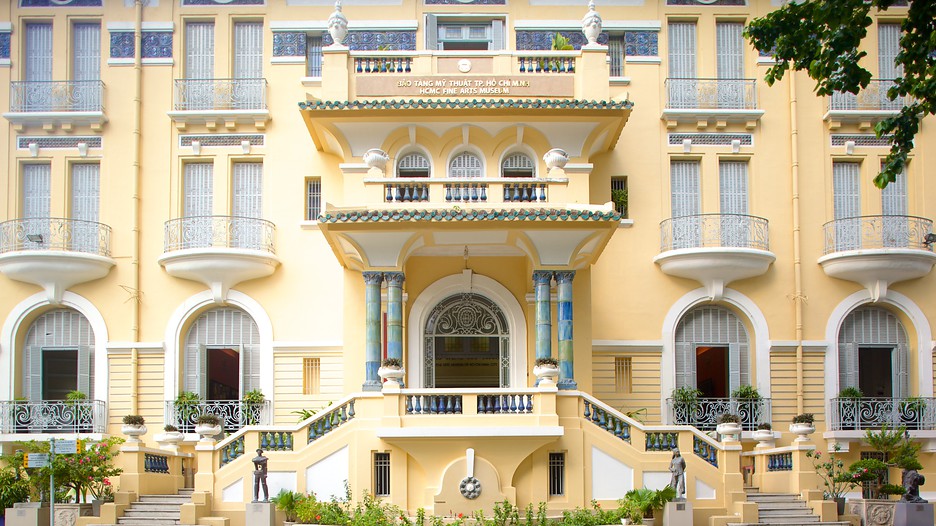
Ho Chi Minh City Museum of Fine Arts
So, be a wise traveler to choose the best time to visit Ho Chi Minh City for the most memorable time in this city in Vietnam, if you're still unsure, contact Incredible Asia Journeys to plan your trip preferably with the best deal and local advice!